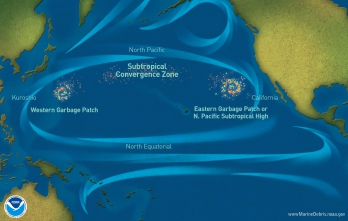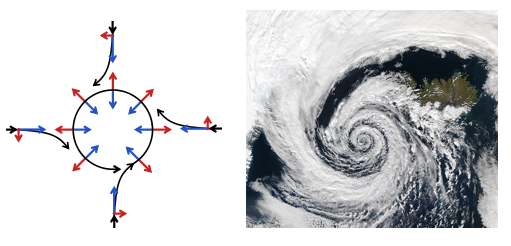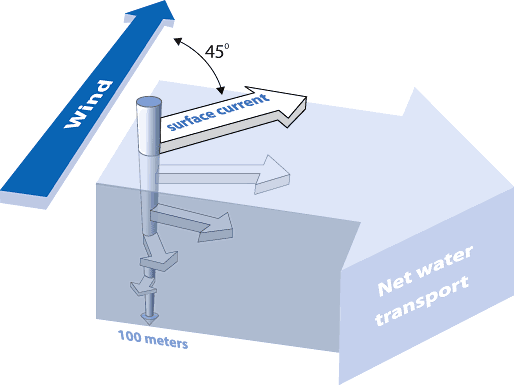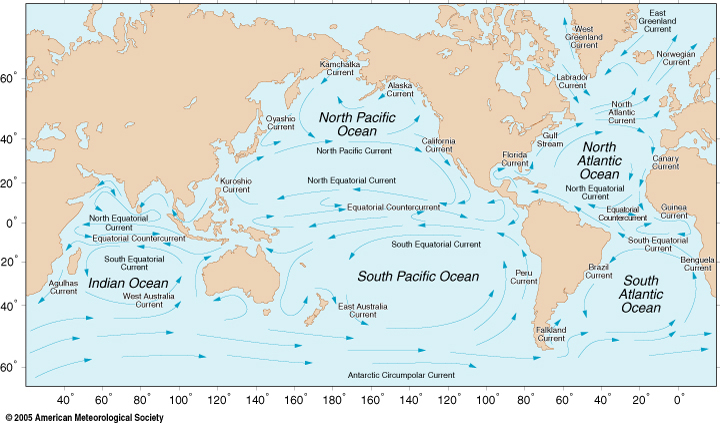 Where a gradient exists, potential forms. Gravitational pull from the Earth's moon causes tides, which have greater impact on ocean currents near shore, but nevertheless are a driving force of ocean motion.  Sources: Left panel: http://en.wikipedia.org/wiki/Coriolis_effect Right panel: http://visibleearth.nasa.gov/view_rec.php?id=6204 Another physics
phenomenon prominently at play in ocean
currents is Ekman transport, which
fundamentally is a product of friction or drag
between layers of water. The resultant force
of wind and water drag result in current
directed at an angle to the surface wind. At a
depth of about 100 meters, the drag with
higher layers cancels out the driving wind
force. Each successively deeper layer is
subject to the Coriolis Effect, causing deeper
layers to flow in the direction opposite of
the surface current. The resultant force of
each water layer's motion and the wind
direction ends up at a right angle to the
wind.
 source: http://oceanservice.noaa.gov/education/tutorial_currents/media/supp_cur04e.html  source: https://www.e-education.psu.edu/earth540/content/c4_p3.html The five major ocean
gyres are found in the North Pacific, South
Pacific, North Atlantic, South Atlantic, and
Indian Ocean.
|
|
|
